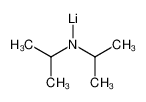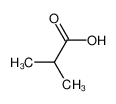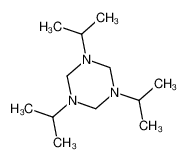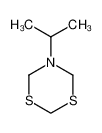| Product name | isopropylamine |
|---|
| Product number | - |
|---|---|
| Other names | 1-Methylethylamine |
| Identified uses | For industry use only. Food additives -> Flavoring Agents |
|---|---|
| Uses advised against | no data available |
| Company | MOLBASE (Shanghai) Biotechnology Co., Ltd. |
|---|---|
| Address | Floor 4 & 5, Building 12, No. 1001 North Qinzhou Road, Xuhui District, Shanghai, China |
| Telephone | +86(21)64956998 |
| Fax | +86(21)54365166 |
| Emergency phone number | +86-400-6021-666 |
|---|---|
| Service hours | Monday to Friday, 9am-5pm (Standard time zone: UTC/GMT +8 hours). |
Flammable liquids, Category 1
Skin irritation, Category 2
Eye irritation, Category 2
Specific target organ toxicity – single exposure, Category 3
2.2 GHS label elements, including precautionary statements| Pictogram(s) | 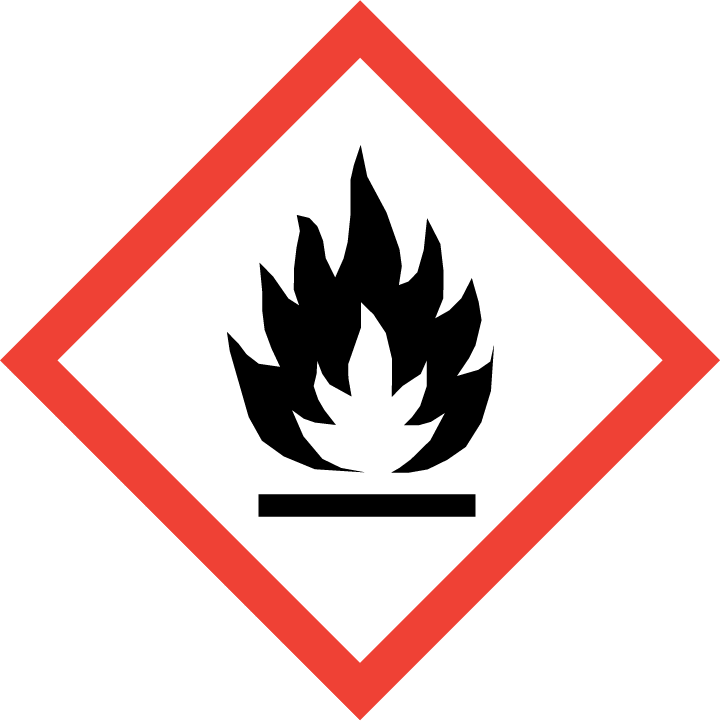  |
|---|---|
| Signal word | Danger |
| Hazard statement(s) | H224 Extremely flammable liquid and vapour H315 Causes skin irritation H319 Causes serious eye irritation H335 May cause respiratory irritation |
| Precautionary statement(s) | |
| Prevention | P210 Keep away from heat, hot surfaces, sparks, open flames and other ignition sources. No smoking. P233 Keep container tightly closed. P240 Ground and bond container and receiving equipment. P241 Use explosion-proof [electrical/ventilating/lighting/...] equipment. P242 Use non-sparking tools. P243 Take action to prevent static discharges. P280 Wear protective gloves/protective clothing/eye protection/face protection. P264 Wash ... thoroughly after handling. P261 Avoid breathing dust/fume/gas/mist/vapours/spray. P271 Use only outdoors or in a well-ventilated area. |
| Response | P303+P361+P353 IF ON SKIN (or hair): Take off immediately all contaminated clothing. Rinse skin with water [or shower]. P370+P378 In case of fire: Use ... to extinguish. P302+P352 IF ON SKIN: Wash with plenty of water/... P321 Specific treatment (see ... on this label). P332+P313 If skin irritation occurs: Get medical advice/attention. P362+P364 Take off contaminated clothing and wash it before reuse. P305+P351+P338 IF IN EYES: Rinse cautiously with water for several minutes. Remove contact lenses, if present and easy to do. Continue rinsing. P337+P313 If eye irritation persists: Get medical advice/attention. P304+P340 IF INHALED: Remove person to fresh air and keep comfortable for breathing. P312 Call a POISON CENTER/doctor/…if you feel unwell. |
| Storage | P403+P235 Store in a well-ventilated place. Keep cool. P403+P233 Store in a well-ventilated place. Keep container tightly closed. P405 Store locked up. |
| Disposal | P501 Dispose of contents/container to ... |
none
3.Composition/information on ingredients 3.1 Substances| Chemical name | Common names and synonyms | CAS number | EC number | Concentration |
|---|---|---|---|---|
| isopropylamine | isopropylamine | 75-31-0 | none | 100% |
Consult a physician. Show this safety data sheet to the doctor in attendance.
If inhaledFresh air, rest. Half-upright position. Artificial respiration may be needed. Refer for medical attention.
In case of skin contactFirst rinse with plenty of water for at least 15 minutes, then remove contaminated clothes and rinse again. Refer for medical attention .
In case of eye contactRinse with plenty of water for several minutes (remove contact lenses if easily possible). Refer immediately for medical attention.
If swallowedRinse mouth. Give nothing to drink. Do NOT induce vomiting. Refer immediately for medical attention.
4.2 Most important symptoms/effects, acute and delayedInhalation causes nose and throat irritation, severe coughing, and chest pain due to irritation of air passages; can cause lung edema and loss of consciousness. Ingestion causes nausea, salivation and severe irritation of mouth and stomach. Contact with eyes causes severe irritation and possible edema of the cornea. Contact with skin causes severe irritation. (USCG, 1999)
4.3 Indication of immediate medical attention and special treatment needed, if necessaryImmediate first aid: Ensure that adequate decontamination has been carried out. If patient is not breathing, start artificial respiration, preferably with a demand valve resuscitator, bag-valve-mask device, or pocket mask, as trained. Perform CPR if necessary. Immediately flush contaminated eyes with gently flowing water. Do not induce vomiting. If vomiting occurs, lean patient forward or place on the left side (head-down position, if possible) to maintain an open airway and prevent aspiration. Keep patient quiet and maintain normal body temperature. Obtain medical attention. /Organic bases/Amines and related compounds/
5.Fire-fighting measures 5.1 Extinguishing media Suitable extinguishing mediaThis chemical is a flammable liquid. Poisonous gases including nitrogen oxides and hydrogen cyanide are produced in fire. Use dry chemical, carbon dioxide, or foam extinguishers. Vapors are heavier than air and will collect in low areas. Vapors may travel long distances to ignition sources and flashback. Vapors in confined areas may explode when exposed to fire. Containers may explode in fire. Storage containers and parts of containers may rocket great distances, in many directions. If material or contaminated runoff enters waterways, notify downstream users of potentially contaminated waters. Notify local health and fire officials and pollution control agencies. From a secure, explosion-proof location, use water spray to cool exposed containers. If cooling streams are ineffective (venting sound increases in volume and pitch, tank discolors or shows any digns of deforming), withdraw immediately to a secure position.
5.2 Specific hazards arising from the chemicalSpecial Hazards of Combustion Products: Toxic oxides of nitrogen may form in fire. Behavior in Fire: Burning isopropylamine is difficult to control because of the ease of reignition of the vapor. Vapors are heavier than air and may travel to a source of ignition and flash back. Containers may explode. (USCG, 1999)
5.3 Special protective actions for fire-fightersWear self-contained breathing apparatus for firefighting if necessary.
6.Accidental release measures 6.1 Personal precautions, protective equipment and emergency proceduresUse personal protective equipment. Avoid dust formation. Avoid breathing vapours, mist or gas. Ensure adequate ventilation. Evacuate personnel to safe areas. Avoid breathing dust. For personal protection see section 8.
6.2 Environmental precautionsEvacuate danger area! Remove all ignition sources. Consult an expert! Personal protection: complete protective clothing including self-contained breathing apparatus. Do NOT let this chemical enter the environment. Do NOT wash away into sewer. Collect leaking liquid in sealable containers. Absorb remaining liquid in sand or inert absorbent. Then store and dispose of according to local regulations.
6.3 Methods and materials for containment and cleaning upSRP: Wastewater from contaminant suppression, cleaning of protective clothing/equipment, or contaminated sites should be contained and evaluated for subject chemical or decomposition product concentrations. Concentrations shall be lower than applicable environmental discharge or disposal criteria. Alternatively, pretreatment and/or discharge to a permitted wastewater treatment facility is acceptable only after review by the governing authority and assurance that "pass through" violations will not occur. Due consideration shall be given to remediation worker exposure (inhalation, dermal and ingestion) as well as fate during treatment, transfer and disposal. If it is not practicable to manage the chemical in this fashion, it must be evaluated in accordance with EPA 40 CFR Part 261, specifically Subpart B, in order to determine the appropriate local, state and federal requirements for disposal.
7.Handling and storage 7.1 Precautions for safe handlingAvoid contact with skin and eyes. Avoid formation of dust and aerosols. Avoid exposure - obtain special instructions before use.Provide appropriate exhaust ventilation at places where dust is formed. For precautions see section 2.2.
7.2 Conditions for safe storage, including any incompatibilitiesWell closed. Fireproof. Provision to contain effluent from fire extinguishing. Separated from food and feedstuffs. See Chemical Dangers. Store in an area without drain or sewer access.Isopropylamine should be stored in a cool, dry, well-ventilated area in tightly sealed containers that are labeled in accordance with OSHA's Hazard Communication Standard [29 CFR 1910.1200]. Containers of isopropylamine should be protected from physical damage and should be stored separately from strong acids, strong oxidizers, perchloryl fluoride, or 1-chloro-1,3- epoxypropane.
8.Exposure controls/personal protection 8.1 Control parameters Occupational Exposure limit valuesNIOSH questions whether the PELs proposed for isopropylamine [TWA 5 ppm, STEL 10 ppm] are adequate to protect workers from recognized health hazards.
Biological limit valuesno data available
8.2 Appropriate engineering controlsHandle in accordance with good industrial hygiene and safety practice. Wash hands before breaks and at the end of workday.
8.3 Individual protection measures, such as personal protective equipment (PPE) Eye/face protectionSafety glasses with side-shields conforming to EN166. Use equipment for eye protection tested and approved under appropriate government standards such as NIOSH (US) or EN 166(EU).
Skin protectionWear impervious clothing. The type of protective equipment must be selected according to the concentration and amount of the dangerous substance at the specific workplace. Handle with gloves. Gloves must be inspected prior to use. Use proper glove removal technique(without touching glove's outer surface) to avoid skin contact with this product. Dispose of contaminated gloves after use in accordance with applicable laws and good laboratory practices. Wash and dry hands. The selected protective gloves have to satisfy the specifications of EU Directive 89/686/EEC and the standard EN 374 derived from it.
Respiratory protectionWear dust mask when handling large quantities.
Thermal hazardsno data available
9.Physical and chemical properties| Physical state | colourless liquid |
|---|---|
| Colour | Colorless liquid [Note: A gas above 91 degrees F]. |
| Odour | Ammonia odor |
| Melting point/ freezing point | -95°C(lit.) |
| Boiling point or initial boiling point and boiling range | 33°C |
| Flammability | Class IA Flammable Liquid: Fl.P. below 22.78°C and BP below 37.78°C.Extremely flammable. |
| Lower and upper explosion limit / flammability limit | Lower flammable limit: 2.0% by volume; Upper flammable limit: 10.4% by volume |
| Flash point | -20°C(lit.) |
| Auto-ignition temperature | 402.22°C (USCG, 1999) |
| Decomposition temperature | no data available |
| pH | Strong base |
| Kinematic viscosity | 0.47 mm²/s at 20°C |
| Solubility | In water:soluble |
| Partition coefficient n-octanol/water (log value) | log Kow = 0.26 |
| Vapour pressure | 9.2 psi ( 20 °C) |
| Density and/or relative density | 0.69 |
| Relative vapour density | 2.04 (vs air) |
| Particle characteristics | no data available |
no data available
10.2 Chemical stabilityStable under recommended storage conditions.
10.3 Possibility of hazardous reactionsFlammable liquid. Vapors are heavier than air and may travel to a source of ignition and flash back. Combustion by-products include oxides of nitrogen.The vapour is heavier than air and may travel along the ground; distant ignition possible.ISOPROPYLAMINE is a colorless, alkaline liquid, very volatile, moderately toxic, highly flammable. Dangerous fire hazard when exposed to heat, flame, sparks, or strong oxidizers. When heated to decomposition it emits toxic fumes of oxides of nitrogen [M. K.]. A mixture of isopropylamine and perchloryl fluoride resulted in an uncontrolled oxidation and/or explosion, [J. Org. Chem., 1980, 45, 4036]. The reaction of 1-chloro-2,3-epoxypropane and the amine and most probably other nitrogen bases, yields a violent exotherm, [Chem. & Ind., 1971, 994].
10.4 Conditions to avoidno data available
10.5 Incompatible materialsReacts with acids, aldehydes, ketones, epoxides, and oxidizing agents.
10.6 Hazardous decomposition productsThermal decomposition products: ammoniac, nitrogen oxide, carbon monoxide. Combustion occurs nitriles and cyanides derivatives. /Aqueous solution of isopropylamine at 70%v/v/
11.Toxicological information Acute toxicity- Oral: LD50 Rat oral 820 mg/kg
- Inhalation: LC50 Rat inhalation 9.8 mg/L for 4 hr
- Dermal: no data available
no data available
Serious eye damage/irritationno data available
Respiratory or skin sensitizationno data available
Germ cell mutagenicityno data available
Carcinogenicityno data available
Reproductive toxicityno data available
STOT-single exposureno data available
STOT-repeated exposureno data available
Aspiration hazardno data available
12.Ecological information 12.1 Toxicity- Toxicity to fish: LC50; Species: Onchorhynchus mykiss (Rainbow trout); Conditions: static; Concentration: 40 mg/L for 48 hr /Isopropylamin, chemically pure
- Toxicity to daphnia and other aquatic invertebrates: EC50; Species: Daphnia magna (Water flea); Concentration: 20.8 mg/L for 48 hr; Effect: inhibition of mobility /Conditions of bioassay not specified in source examined
- Toxicity to algae: EC50; Species: Scenedesmus subspicatus (Green algae); Concentration: 1.2 mg/L for 96 hr; Effect: growth inhbition /Conditions of bioassay not specified in source examined
- Toxicity to microorganisms: no data available
AEROBIC: An aerobic screening test, which utilized activated sludge for inocula, suggests isopropylamine should biodegrade rapidly in the environment(1). Isopropylamine was completely degraded within a 2 day period(1). However, isopropylamine may be toxic to micro-organisms at high concentration(2). After 8 days, an initial concentration of 500 ppm was reduced by 10% in a closed bottle inoculated with a microbial population of 5000 mg/L from activated sludge acclimated to aniline, and maintained at 20°C(2). 100 mg/L of isopropylamine was 70-80% degraded afer 28 days in an OECD 301F test(3). This test shows that isopropylamine is readily biodegradable. Isopropylamine showed greater than 95% degradation after 10 days using industrial, non-adapted sludge in a OECD 302B test(3). This test indicates that isopropylamine is inherently biodegradable(3).
12.3 Bioaccumulative potentialAn estimated BCF of 0.50 was calculated in fish for isopropylamine(SRC), using a measured log Kow of 0.26(1) and a regression-derived equation(2). According to a classification scheme(3), this BCF suggests the potential for bioconcentration in aquatic organisms is low (SRC), provided the compound is not metabolized by the organism(SRC).
12.4 Mobility in soilThe pKa of isopropylamine is 10.6(1), indicating that this compound will exist almost entirely in the cation form in the environment. Cations generally adsorb more strongly to soils containing organic carbon and clay than their neutral counterparts(2), suggesting that the mobility in soil will be low(SRC).
12.5 Other adverse effectsno data available
13.Disposal considerations 13.1 Disposal methods ProductThe material can be disposed of by removal to a licensed chemical destruction plant or by controlled incineration with flue gas scrubbing. Do not contaminate water, foodstuffs, feed or seed by storage or disposal. Do not discharge to sewer systems.
Contaminated packagingContainers can be triply rinsed (or equivalent) and offered for recycling or reconditioning. Alternatively, the packaging can be punctured to make it unusable for other purposes and then be disposed of in a sanitary landfill. Controlled incineration with flue gas scrubbing is possible for combustible packaging materials.
14.Transport information 14.1 UN Number| ADR/RID: UN1221 | IMDG: UN1221 | IATA: UN1221 |
| ADR/RID: ISOPROPYLAMINE |
| IMDG: ISOPROPYLAMINE |
| IATA: ISOPROPYLAMINE |
| ADR/RID: 3 | IMDG: 3 | IATA: 3 |
| ADR/RID: I | IMDG: I | IATA: I |
| ADR/RID: no | IMDG: no | IATA: no |
no data available
14.7 Transport in bulk according to Annex II of MARPOL 73/78 and the IBC Codeno data available
15.Regulatory information 15.1 Safety, health and environmental regulations specific for the product in question| Chemical name | Common names and synonyms | CAS number | EC number |
|---|---|---|---|
| isopropylamine | isopropylamine | 75-31-0 | none |
| European Inventory of Existing Commercial Chemical Substances (EINECS) | Listed. | ||
| EC Inventory | Listed. | ||
| United States Toxic Substances Control Act (TSCA) Inventory | Listed. | ||
| China Catalog of Hazardous chemicals 2015 | Listed. | ||
| New Zealand Inventory of Chemicals (NZIoC) | Listed. | ||
| Philippines Inventory of Chemicals and Chemical Substances (PICCS) | Listed. | ||
| Vietnam National Chemical Inventory | Not Listed. | ||
| Chinese Chemical Inventory of Existing Chemical Substances (China IECSC) | Listed. | ||
| Creation Date | Aug 12, 2017 |
|---|---|
| Revision Date | Aug 12, 2017 |
- CAS: Chemical Abstracts Service
- ADR: European Agreement concerning the International Carriage of Dangerous Goods by Road
- RID: Regulation concerning the International Carriage of Dangerous Goods by Rail
- IMDG: International Maritime Dangerous Goods
- IATA: International Air Transportation Association
- TWA: Time Weighted Average
- STEL: Short term exposure limit
- LC50: Lethal Concentration 50%
- LD50: Lethal Dose 50%
- EC50: Effective Concentration 50%
- IPCS - The International Chemical Safety Cards (ICSC), website: http://www.ilo.org/dyn/icsc/showcard.home
- HSDB - Hazardous Substances Data Bank, website: https://toxnet.nlm.nih.gov/newtoxnet/hsdb.htm
- IARC - International Agency for Research on Cancer, website: http://www.iarc.fr/
- eChemPortal - The Global Portal to Information on Chemical Substances by OECD, website: http://www.echemportal.org/echemportal/index?pageID=0&request_locale=en
- CAMEO Chemicals, website: http://cameochemicals.noaa.gov/search/simple
- ChemIDplus, website: http://chem.sis.nlm.nih.gov/chemidplus/chemidlite.jsp
- ERG - Emergency Response Guidebook by U.S. Department of Transportation, website: http://www.phmsa.dot.gov/hazmat/library/erg
- Germany GESTIS-database on hazard substance, website: http://www.dguv.de/ifa/gestis/gestis-stoffdatenbank/index-2.jsp
- ECHA - European Chemicals Agency, website: https://echa.europa.eu/










